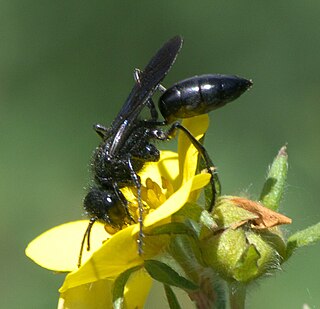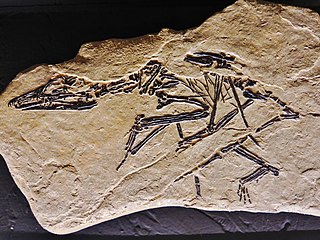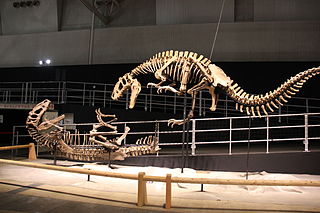
The Turkish Van is a naturally occurring breed of domestic cat that originated in the mountains of modern-day Turkey, specifically in the Armenian Highlands. The Van is classified as a semi-long hair, but it has two lengths of hair, determined by season. In the winter, the hair is thick and long. In the summer, the hair sheds to leave a short light coat. Both coat lengths are typified as being as soft as cashmere, down to the root. There is no evident undercoat on the Van, only one coat. The breed is rare, and is distinguished by the Van pattern, where the color is restricted to the head and the tail, and the rest of the cat is white; this is due to the expression of the piebald white spotting gene, a type of partial leucism. A Turkish Van may have blue or amber eyes, or be odd-eyed. The breed has been claimed to be descended from the landrace of usually all-white Van cats, mostly found near Lake Van. The Western preference for matching eyes in the Van cat is a source of amusement to the people of the Lake Van region.

Hector's beaked whale, is a small mesoplodont living in the Southern Hemisphere. This whale is named after Sir James Hector, a founder of the colonial museum in Wellington, New Zealand. The species has rarely been seen in the wild.

The desert bandicoot is an extinct bandicoot of the arid country in the centre of Australia.

The Sphecidae are a cosmopolitan family of wasps of the suborder Apocrita that includes sand wasps, mud daubers, and other thread-waisted wasps.

Achelousaurus is a genus of centrosaurine ceratopsid dinosaur that lived during the Late Cretaceous Period of what is now North America, about 74.2 million years ago. The first fossils of Achelousaurus were collected in Montana in 1987, by a team led by Jack Horner, with more finds made in 1989. In 1994, Achelousaurus horneri was described and named by Scott D. Sampson; the generic name means "Achelous lizard", in reference to the Greek deity Achelous, and the specific name refers to Horner. The genus is known from a few specimens consisting mainly of skull material from individuals, ranging from juveniles to adults.

Titanosaurus is a dubious genus of sauropod dinosaurs, first described by Richard Lydekker in 1877. It is known from the Maastrichtian Lameta Formation of India and possibly also the Maastrichtian Marília Formation of Brazil.

Altispinax is a genus of large predatory theropod dinosaur from the Early Cretaceous period of what is now the Wadhurst Clay Formation of East Sussex, England.

Monoclonius is a dubious genus of herbivorous ceratopsian dinosaur found in the Late Cretaceous layers of the Judith River Formation in Montana, United States, and the uppermost rock layers of the Dinosaur Park Formation in Alberta, Canada dated to between 75 and 74.6 million years ago.

Struthiosaurus is one of the smallest known and most basal genera of nodosaurid dinosaurs, from the Late Cretaceous period (Santonian-Maastrichtian) of Austria, Romania, France and Hungary in Europe. It was protected by body armour. Although estimates of its length vary, it may have been as small as 2.2 metres (7.2 ft) long.

Preondactylus is a genus of long-tailed pterosaurs from the Late Triassic that inhabited what is now Italy. It contains a single known species, Preondactylus buffarinii, which was discovered by Nando Buffarini in 1982 at the Forni Dolostone near Udine in the Preone valley of the Italian Alps.
Rhadinosaurus is a genus of nodosaurid ankylosaur first described in 1881 by Harry Govier Seeley, based on remains uncovered in Austria sometime between 1859 and 1870 by Edward Suess and Pawlowitsch. It was a herbivore that lived around 84.9 to 70.6 million years ago. The type species is R. alcimus.

The Cuban macaw or Cuban red macaw was a species of macaw native to the main island of Cuba and the nearby Isla de la Juventud that became extinct in the late 19th century. Its relationship with other macaws in its genus was long uncertain, but it was thought to have been closely related to the scarlet macaw, which has some similarities in appearance. It may also have been closely related, or identical, to the hypothetical Jamaican red macaw. A 2018 DNA study found that it was the sister species of two red and two green species of extant macaws.

The Australian bustard is a large ground dwelling bird which is common in grassland, woodland and open agricultural country across northern Australia and southern New Guinea. It stands at about one metre high, and its wingspan is around twice that length. The species is nomadic, flying to areas when food becomes plentiful, and capable of travelling long distances. They were once widespread and common to the open plains of Australia, but became rare in regions that were populated by Europeans during the colonisation of Australia. The bustard is omnivorous, mostly consuming the fruit or seed of plants, but also eating invertebrates such crickets, grasshoppers, smaller mammals, birds and reptiles.

Discosauriscus was a small seymouriamorph which lived in what is now Central and Western Europe in the Early Permian Period. Its best fossils have been found in the Broumov and Bačov Formations of Boskovice Furrow, in the Czech Republic.
The Ethiopian long-eared bat or Ethiopian big-eared bat is a recently described species of long-eared bat in the family Vespertilionidae.

Yutyrannus is a genus of proceratosaurid tyrannosauroid dinosaur which contains a single known species, Yutyrannus huali. This species lived during the early Cretaceous period in what is now northeastern China. Three fossils of Yutyrannus huali—all found in the rock beds of Liaoning Province—are currently the largest-known dinosaur specimens that preserve direct evidence of feathers.

Diluvicursor is a genus of small ornithischian from the Lower Albian of Australia. It is known from one species, the type species D. pickeringi. The two known specimens, a vertebra and a partial juvenile postcranium discovered in 2005 from the Eumeralla Formation, are known, and they were named in early 2018.
Sinocephale is a genus of pachycephalosaurid dinosaur that lived in Inner Mongolia, China during the Cretaceous period. The only species, Sinocephale bexelli, was originally named as a species of the genus Troodon in 1953, and later transferred to the genus Stegoceras. After decades of being considered dubious, it was re-evaluated in 2021 and recognized as a valid taxon, being given a unique generic name. The original holotype was lost, with modern research conducted using rediscovered plaster casts. Scant material makes for limited knowledge of its life appearance, but it is distinguished by an embayment on the back of the domed skull, which would give it a heart shape as seen from above. It is potentially the oldest known pachycephalosaurid and falls within the subset of the family called Pachycephalosaurinae, related to animals such as Stegoceras. The geologic context of the species has been historically unclear but it is currently thought to originate in rocks belonging to the Ulansuhai Formation.















